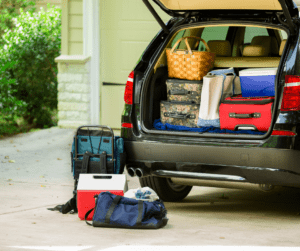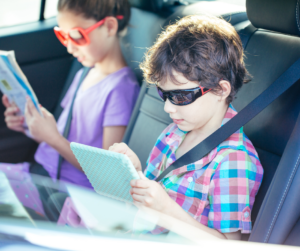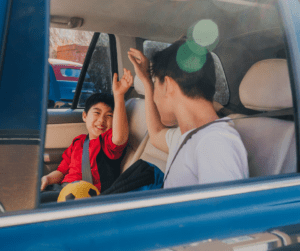Navigating Road Trips: Essential Tips For Parents Of Children With Autism
Embarking on a road trip with a child with autism can be a daunting prospect for parents. The unfamiliar environment, long hours in the car, and disruption to routines can all present unique challenges. However, with careful planning and the right tools, a road trip with a child with autism can be a successful and rewarding experience.

Understanding the Unique Needs of Your Child
- Identify Sensory Sensitivities: Determine what sensory inputs are soothing versus those that are overwhelming for your child. This might include preferences around sounds, textures, and lighting.
- Communication Preferences: Understand how your child communicates best, whether through verbal communication, non-verbal cues, or the use of assistive devices. This will be key in managing expectations and needs during the trip.
- Recognize Triggers: Be aware of specific situations or environments that may cause stress or anxiety for your child. This could include crowded places, transitions between activities, or changes in routine.
- Favorite Items: Make sure to pack your child’s favorite items that can provide comfort and a sense of security during the trip. These might be toys, books, or electronic devices.
- Dietary Needs and Medications: Note any special dietary requirements or medications your child needs, including the schedule for taking them.
By focusing on these aspects, you can tailor your road trip plans to accommodate your child’s needs, making the journey more enjoyable for everyone.
Early Planning is Key

When setting out on a road trip with a child with autism, it’s important to plan early. Here’s how to ensure your preparations are thorough and thoughtful:
- Route Research: Investigate the journey ahead of time, pinpointing rest stops and attractions that align with your child’s interests and needs. Look for quiet, less crowded places.
- Segment the Drive: Break down the trip into manageable parts. This approach allows for frequent stops so your child can have breaks, reducing stress and agitation.
- Accommodation Checks: Book your stays in advance, ensuring that the places are conducive to your child’s comfort. Verify if they offer autism-friendly environments.
- Emergency Preparedness: Have a plan in place for potential emergencies. This includes knowing the locations of hospitals along your route and having a list of essential contacts.
- Involve Your Child: If possible, involve your child in the planning process. This could include letting them choose some activities or stops along the way. Whatever you choose, the goal is to help your child feel more invested in the trip.
This structured approach to planning aims to mitigate surprises and create a journey that’s enjoyable for both you and your child.
Related: 8 Tips for Planing a Vacation with a Child with Autism
Packing Essentials for Comfort and Security
Packing for a road trip with a child with autism requires thoughtful consideration to ensure their comfort and security throughout the journey. Here’s what to include:
- Familiar Items: Bring along toys, books, or electronic devices that your child is fond of to help them feel at ease.
- Sensory Tools: Pack any specific sensory tools that your child uses regularly, such as noise-canceling headphones, a weighted blanket, or tactile toys to help manage sensory overload.
- Comfort Items: Include any items that provide comfort to your child, like a special blanket or a favorite piece of clothing.
- Medications and Health Supplies: Ensure you have an ample supply of any medications, along with a first aid kit tailored to your child’s health needs.
- Snacks and Dietary Needs: Bring a supply of familiar snacks and any special dietary items your child may require to maintain routine and reduce the potential for discomfort.
- Identification Tools: Consider packing an ID bracelet or a GPS tracker, especially useful in crowded or unfamiliar places.
Since each child with autism is unique, tailoring this list to fit your child’s specific preferences and needs can help to create a secure and comforting travel experience.
Creating a Sense of Familiarity and Routine

Maintaining a semblance of normalcy is crucial for children with autism when traveling, especially on a road trip. Here’s how to preserve a sense of routine:
- Visual Schedules: Utilize visual schedules to outline the day’s activities, mirroring the structure they’re accustomed to at home.
- Familiar Rituals: Continue with established rituals, such as story time before bed or morning routines, to provide comfort and predictability.
- Meal and Snack Times: Keep meal and snack times consistent with their usual schedule to help maintain normalcy.
- Break Times: Plan for regular breaks, aligned with their daily routine, allowing for movement or quiet time as needed.
- Sleeping Arrangements: Mimic their home sleeping environment as closely as possible, bringing along favorite bedding or nighttime items.
By integrating these steps, you can help create a travel experience that respects your child’s need for routine and familiarity, making the road trip more enjoyable for everyone.
Embracing the Road Trip Experience Together
Embarking on a road trip with a child with autism is about enjoying the journey as much as the destination. It offers a chance to cherish small wins and joys, with flexibility being crucial to adapt to your child’s needs. Encouraging them to document the trip adds a personal touch, turning it into a cherished project. Focusing on the positive and the adventure, while also allowing downtime for relaxation, sets a comforting tone. By prioritizing love, understanding, and a sense of adventure, the trip becomes a memorable experience, strengthening your family’s bond.
